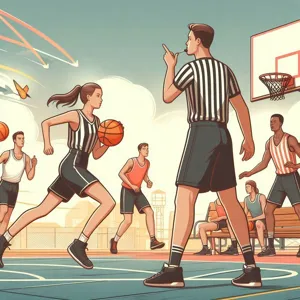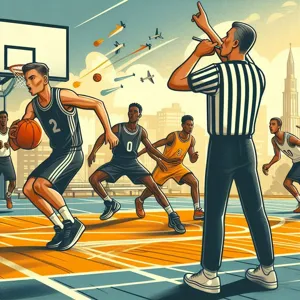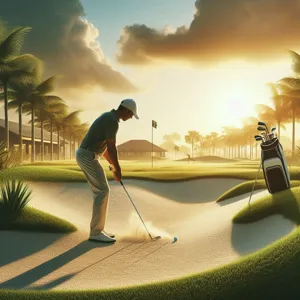Basketball is more than just a game; it’s a dynamic blend of strategy, skill, and teamwork that captivates millions around the globe.
Whether you’re a seasoned player hitting the court or a newcomer eager to learn the ropes, understanding the fundamental rules of basketball is essential for mastering the game. From the nuances of dribbling to the intricacies of fouls and violations, these rules not only shape the flow of play but also enhance your overall performance and enjoyment of the sport. In this comprehensive guide, we’ll break down the most common basketball rules every player should know, ensuring you’re well-equipped to navigate the court with confidence and flair. So lace up your sneakers and get ready to elevate your game by becoming a knowledgeable and strategic player!
1. Introduction to Basketball Rules

Basketball is not just a sport; it’s a dynamic game full of strategy, teamwork, and skill. Whether you’re a beginner stepping onto the court for the first time or an experienced player looking to refine your understanding, mastering the rules of basketball is essential for both individual improvement and overall team success. The rules serve as the foundation for fair play and ensure that every player has an equal opportunity to showcase their talents.
In this introduction to basketball rules, we will delve into the key regulations that govern the game, providing you with a comprehensive overview that will enhance your understanding and performance on the court. From basic concepts like fouls and violations to more complex rules regarding dribbling and shooting, grasping these fundamentals will enable you to play with confidence and make informed decisions during gameplay.
Moreover, understanding the rules fosters a deeper appreciation of the sport itself. It allows players to anticipate opponents’ moves, strategize more effectively, and maintain a respectful competitive spirit. As you navigate through this guide, you’ll find that knowledge of the rules not only elevates your game but also enriches your enjoyment of basketball as a whole. So, lace up your sneakers and get ready to dive into the essential rules that every player should know to truly master the game!
2. The Objective of the Game
In basketball, the objective of the game is elegantly simple yet profoundly strategic: score more points than your opponent within the allotted time. The thrill of competition unfolds on a rectangular court, where two teams—typically comprising five players each—vie for dominance, utilizing skill, teamwork, and strategy.
The primary way to score points is by shooting the basketball through the opponent’s hoop, which is elevated ten feet above the ground. A shot made from inside the three-point line earns the team two points, while a successful shot from beyond that arc garners three points, rewarding players for their range and accuracy. Free throws, awarded after certain fouls, offer a chance to score one point without opposition, making them crucial moments to capitalize on.
Every dribble, pass, and screen executed on the court is designed with the objective of outmaneuvering the defense to create scoring opportunities. Offensively, players must be agile and decisive, working in sync to exploit defensive weaknesses. The thrill lies not just in the points scored but also in the strategic plays and quick thinking that can change the momentum of the game in an instant.
Defensively, the objective shifts to preventing the opposing team from scoring. Players must understand their roles, whether it’s marking an opponent closely, anticipating passes, or diving for loose balls. The defensive efforts can often dictate the flow of the game, making the balance between offense and defense a delicate dance.
Ultimately, mastering the game of basketball requires a clear understanding of this central objective. Each player must internalize the importance of teamwork, communication, and adaptability, as the quest to outscore the opponent is what drives the relentless excitement and spirit of the game.
3. Understanding the Court Layout

Understanding the court layout is essential for any basketball player, whether you’re a novice just starting out or a seasoned pro looking to refine your game. The basketball court is not just a playing surface; it’s a strategic arena that dictates how the game flows and how players interact.
At first glance, the court can seem like a simple rectangle, but a closer inspection reveals a wealth of detail that influences gameplay. The court is 94 feet long and 50 feet wide, divided by a midcourt line that separates the two halves. This line is crucial for understanding when a team can advance the ball and when they must reset.
Key areas to familiarize yourself with include the three-point arc, the free-throw line, and the paint—the rectangular area near the basket. The three-point arc marks the boundary for long-range shots, where a successful basket is worth three points. Understanding the distance from the arc can help players gauge their shooting range and make smarter shot selections.
The free-throw line, positioned 15 feet from the hoop, is where players take unopposed shots after certain fouls are committed. Mastering your free-throw technique can add invaluable points to your game. The paint, or key, is where much of the action occurs, especially during rebounds and post plays. Knowing how to navigate this area—positioning yourself for rebounds, setting screens, or executing layups—can significantly impact your team’s performance.
Additionally, each basket is flanked by the sidelines and baselines, which define the playing area. Understanding out-of-bounds rules will keep players alert and aware, ensuring they don’t lose possession due to careless foot placement.
Finally, being aware of the bench area is vital for team dynamics. This is where substitutions occur and where players can receive coaching advice during breaks in play.
By taking the time to learn the intricacies of the court layout, players can enhance their game awareness, make informed decisions, and ultimately contribute to their team’s success on the hardwood.
4. Basic Scoring Rules
Understanding the basic scoring rules in basketball is crucial for any player looking to elevate their game. At its core, scoring in basketball revolves around getting the ball through the opponent’s hoop, but the nuances can vary significantly based on the player’s position on the court and the type of shot taken.
The most fundamental scoring rule is the distinction between two-point and three-point shots. A two-point shot is awarded for any basket made from inside the three-point line, typically made during layups, jump shots, or close-range attempts. Conversely, a three-point shot, which is celebrated for its strategic advantage, is awarded when a player makes a basket from beyond the three-point line. Understanding the court’s layout and recognizing where the three-point line is located can give players a significant edge, especially in tight games where every point counts.
Additionally, free throws provide another avenue for scoring. These are awarded after certain fouls are committed against a player shooting the ball. Each successful free throw counts as one point and can be a crucial element in games where scoring opportunities are limited. Players must stay calm and focused during these moments, as they offer a valuable chance to add to the team’s score without any defensive interference.
Moreover, players should be mindful of the shot clock, which adds an element of urgency to scoring. Teams have a limited amount of time—usually 24 seconds in professional play—to attempt a shot, encouraging quick decision-making and teamwork. Understanding how to maximize shot opportunities within this time constraint can significantly impact a team’s overall performance.
In summary, mastering the basic scoring rules of basketball not only enhances a player’s individual skills but also contributes to the team’s success on the court. By recognizing the differences in shot types, making the most of free throws, and effectively managing the shot clock, players can become more strategic in their gameplay, ultimately leading to higher scores and more victories.
5. Fouls: What Constitutes a Foul?

Understanding fouls is essential for any basketball player, as it not only affects the flow of the game but also can heavily influence the outcome. A foul occurs when a player makes illegal physical contact with an opponent, disrupting the play and potentially granting the other team free throws or possession of the ball. While the specifics can vary slightly between leagues—such as the NBA, college basketball, and international play—there are fundamental principles that all players should be aware of.
There are several types of fouls, the most common being personal fouls. These occur during active play and typically involve actions like hitting, pushing, or holding an opponent. For instance, if a defender reaches in and makes contact with a ball handler’s arm, that’s a personal foul. A player who accumulates too many personal fouls—usually six in college and five in the NBA—will foul out of the game, leaving their team shorthanded.
In addition to personal fouls, players should also familiarize themselves with offensive fouls, which occur when an offensive player makes illegal contact with a defender, often while trying to drive to the basket. A classic example is the charge, where a player runs into a stationary defender who has established their position. This type of foul not only results in a turnover but can also swing momentum dramatically.
Moreover, players should be aware of technical fouls, which are assessed for unsportsmanlike conduct or violations of the game’s rules that do not necessarily involve physical contact. Examples include arguing with a referee, taunting an opponent, or even excessive delay of game. Technical fouls are particularly punitive, often resulting in free throws for the opposing team, regardless of who committed the foul.
Finally, understanding how fouls work in terms of team fouls is critical. Each team is allowed a set number of fouls per quarter before the opposing team is awarded free throws for every subsequent foul. A player should be mindful of their foul count to avoid putting their team at a disadvantage late in games.
In summary, mastering the nuances of fouls is crucial for every player looking to elevate their game. Knowing what constitutes a foul—and more importantly, what doesn’t—can help you play smarter, stay on the court longer, and contribute positively to your team’s success.
6. Free Throws: When and How They’re Awarded
In the fast-paced world of basketball, free throws play a pivotal role in determining the outcome of a game. Understanding when and how they’re awarded can give players a significant advantage on the court. Free throws are granted when a player is fouled while shooting, offering a golden opportunity to score points without the interference of defenders. If the foul occurs during a shooting attempt, the player is awarded two or three free throws, depending on whether the shot was taken from inside or beyond the three-point line.
But the situations don’t end there. Free throws can also be awarded for non-shooting fouls once a team accumulates a certain number of fouls within a quarter, commonly referred to as the team foul limit. This is where strategic fouling can come into play, as teams may intentionally commit fouls to disrupt the flow of the game or to put key players at the charity stripe.
The mechanics of shooting a free throw are equally important. Players must establish their stance at the free-throw line, taking care to maintain composure and focus. The rules dictate that players must remain behind the line until the ball has left the shooter’s hand, while defenders must stay outside the key until the shot is taken. This moment of stillness provides a unique opportunity for players to hone their skills and develop their shooting form, transforming pressure into practice.
Mastering free throws can be a game-changer, as they often serve as the difference between victory and defeat. Players who excel at this aspect of the game not only boost their team’s score but also build confidence and momentum, making them formidable assets on the court. Whether it’s the pressure of the championship game or a casual pickup match, understanding the ins and outs of free throws is crucial for any aspiring basketball player.
7. Traveling: The Do’s and Don’ts

Understanding the concept of traveling is essential for every basketball player, as it can make or break a game. Traveling occurs when a player holding the ball moves one or both of their feet illegally. This rule is designed to ensure fair play and maintain the flow of the game. Let’s delve into the do’s and don’ts to help you master this crucial aspect of basketball.
**Do’s:**
1. **Know Your Pivot Foot:** When you catch the ball, establish a pivot foot. This foot must remain planted on the ground while you take steps with your other foot. Practicing your footwork will not only improve your game but also help you avoid traveling violations.
2. **Practice the Triple Threat Position:** This stance allows you to dribble, pass, or shoot effectively without taking a step. By mastering this position, you can maintain better control of your movements and reduce the chances of traveling.
3. **Be Aware of Your Dribble:** When dribbling, ensure you don’t stop and then start dribbling again without first passing or shooting the ball. If you do, it’s considered a double dribble, which is another violation that can cost your team possession.
**Don’ts:**
1. **Don’t Take Extra Steps:** One of the most common mistakes players make is taking too many steps after receiving the ball. A player is allowed to take one step to gather the ball and then two steps to shoot or pass, but exceeding this can lead to a traveling call.
2. **Don’t Shuffle Your Feet:** While you might think you’re being sneaky, shuffling your feet without dribbling is a surefire way to be called for traveling. Always keep your movements deliberate and within the rules.
3. **Don’t Ignore the Referee’s Call:** If you’re called for traveling, take it as a learning opportunity rather than a setback. Reflect on the situation to understand what went wrong and how you can avoid it in the future.
By paying attention to these do’s and don’ts regarding traveling, players can enhance their skills and contribute positively to their team’s performance. Remember, mastery of the basic rules not only improves your game but also increases your understanding of basketball as a whole, making you a more well-rounded player.
8. Double Dribble: What It Is and How to Avoid It
The double dribble is one of the most common violations in basketball, yet it often catches even seasoned players off guard. Essentially, a double dribble occurs when a player dribbles the ball, stops, and then begins to dribble again. This rule is in place to maintain the flow of the game and prevent players from gaining an unfair advantage by stopping and restarting their dribble at will.
To avoid committing this infraction, players must be mindful of their movements on the court. It’s crucial to keep your dribble going once you start; if you need to pause for a moment, make sure to pass the ball to a teammate or take a shot instead of restarting your dribble. Familiarizing yourself with the rhythm of the game can also help. Practice dribbling in motion, pivoting, and making quick decisions so that you’re less likely to find yourself in a situation where you feel the need to stop and start again.
Moreover, understanding the importance of ball control can significantly reduce the risk of a double dribble violation. Focus on maintaining a steady dribble while keeping your head up, which allows you to survey the court and make quicker, more informed decisions. With practice and awareness, players can easily sidestep this common pitfall, ensuring they stay in the game and contribute effectively to their team’s performance.
9. Shot Clock: Understanding Time Constraints
In the fast-paced world of basketball, the shot clock serves as a critical element that heightens the intensity of the game and challenges players to make quick decisions. Introduced to promote a more exciting brand of basketball, the shot clock places time constraints on offensive teams, requiring them to attempt a shot within a designated period—typically 24 seconds in the NBA and 30 seconds in college basketball.
Understanding the shot clock is fundamental for every player, as it directly impacts offensive strategies and plays. When the clock starts ticking, players must balance between taking the time to find an optimal shot and the urgency to get a shot off before the buzzer sounds. This pressure can lead to frantic decisions and rushed shots, which is why players must develop a keen sense of awareness regarding the time remaining.
To navigate the shot clock effectively, players should cultivate a variety of skills. Quick ball movement, effective screens, and sharp cuts can create opportunities for open shots before the clock expires. Additionally, players should practice their shooting skills under pressure to build confidence in taking those last-second shots.
Defensively, understanding the shot clock allows teams to apply strategic pressure. If a team is aware that the shot clock is winding down, they can intensify their defense, forcing the offense into challenging or hurried shots. This defensive awareness not only helps in securing possessions but can also lead to game-changing turnovers.
Mastering the intricacies of the shot clock can be the difference between a well-executed play and a missed opportunity. By honing their understanding of this essential rule, players can elevate their game, contributing to their team’s success and enhancing their overall basketball IQ. Whether you’re a seasoned player or just starting out, grasping the dynamics of the shot clock will undoubtedly sharpen your competitive edge on the court.
10. Personal Fouls vs. Team Fouls
Understanding the distinction between personal fouls and team fouls is crucial for every basketball player, as it can significantly impact gameplay and strategy. A personal foul is committed by an individual player when they violate the rules, often by making illegal physical contact with an opponent, such as pushing, holding, or blocking. Each player is allowed a limited number of personal fouls per game—typically five in high school and six in college and professional leagues. Accumulating too many personal fouls can lead to fouling out of the game, leaving your team at a disadvantage.
On the other hand, team fouls refer to the total number of fouls committed by a team during a specific period of play, often tracked by quarters or halves. Once a team reaches a predetermined number of team fouls—usually seven in a half—opponents are awarded free throws for subsequent fouls. This rule encourages disciplined defense and strategic play, as players must be aware of both their personal foul count and that of their team. Understanding this dynamic can help players make smarter decisions on the court, balancing aggressive defense with the need to protect both their own playing time and the team’s overall fouling situation. In essence, mastering the difference between personal fouls and team fouls is not just about adhering to the rules; it’s about leveraging this knowledge to enhance your performance and contribute to your team’s success.
11. Defensive and Offensive Rules
Understanding the defensive and offensive rules in basketball is crucial for any player aiming to master the game. These two aspects of play not only dictate how the game flows but also define individual roles on the court.
**Offensive Rules** are designed to promote fair play while allowing the offense to strategize and score. One of the fundamental rules is the **three-second rule**, which prohibits offensive players from standing in the key (the paint) for more than three seconds while their team has possession of the ball. This rule prevents players from “camping out” near the basket, allowing for a more dynamic game. Additionally, players must be aware of the **traveling rule**, which states that a player cannot take more than two steps without dribbling the ball. This encourages ball handling skills and ensures that players maintain control when moving toward the basket.
On the flip side, **Defensive Rules** are equally important and are primarily aimed at protecting the integrity of free movement on the court. For instance, the **personal foul rule** is a crucial aspect of defensive play. Players are allowed to contest shots and defend their opponents, but excessive contact can lead to fouls that disrupt the gameplay. Each player is permitted a certain number of fouls before they are disqualified from the game, so understanding how to defend without fouling is key. Moreover, the **shot clock** rule mandates that the offensive team must attempt a shot within a set time frame, typically 24 seconds in professional play. This rule not only keeps the game fast-paced but also encourages strategic offensive plays, challenging defenders to maintain pressure without overcommitting.
Mastering both defensive and offensive rules will not only enhance your individual game but also improve team cohesion. Knowing when to switch from offense to defense, how to capitalize on your opponent’s weaknesses, and understanding the tactical implications of each rule will elevate your basketball skills and overall game IQ. Whether you’re a seasoned player or just starting, keeping these rules top of mind will set the foundation for success on the court.
12. Out of Bounds: What Happens When the Ball Goes Out?
In the fast-paced world of basketball, knowing what happens when the ball goes out of bounds is crucial for every player. Understanding this rule not only helps maintain the flow of the game but also aids in strategic decision-making during critical moments on the court.
When the basketball leaves the boundaries marked by the sidelines or the baseline, it is deemed out of bounds. The moment the ball touches the ground, a player, or any object that is not part of the court, the game pauses to reset. This can occur in a variety of scenarios, such as an errant pass that sails over the sidelines or a player stepping out while attempting to save a ball from going out.
The consequences of a ball going out of bounds depend on the situation. Typically, the opposing team is awarded possession of the ball. They will then initiate a throw-in from the point where the ball crossed the boundary line. This is a pivotal moment; it provides a chance for the defending team to regroup while the offense prepares for the subsequent play.
Players must be acutely aware of their positioning and footwork to avoid unnecessary turnovers. A common mistake occurs when players get too close to the sideline, risking stepping out of bounds while trying to make a play. To mitigate this, players should practice spatial awareness and maintain a safe distance from the boundary, ensuring they can execute plays without compromising their position.
Additionally, the 3-point line and the key area present unique out-of-bounds situations, especially during critical plays. A player shooting a three-pointer must be aware that if their foot touches the line during the shot, the basket counts as a two-pointer instead. Similarly, in the key, players must manage their movements carefully to avoid violations that could lead to turnovers.
Mastering the intricacies of the out-of-bounds rule is essential for any basketball player looking to elevate their game. By being conscious of their surroundings and understanding the implications of boundary violations, players can not only avoid costly mistakes but also harness these moments to regain control and momentum on the court. In basketball, every possession counts, and staying in bounds is just as important as making the shot.
13. The Three-Point Line: Scoring from Beyond the Arc
The three-point line is a defining feature of modern basketball, fundamentally altering how the game is played and scored. This arc, which is set at varying distances from the basket depending on the league—22 feet in the NBA and 19.75 feet in college basketball—serves as a crucial distinction between two-point and three-point scoring. Understanding the significance of this line is essential for any player looking to elevate their game.
When a player shoots from beyond the arc and makes the basket, they earn three points instead of the conventional two. This scoring system has led to an evolution in offensive strategies, encouraging players to develop a reliable long-range shot. coaches now prioritize shooting drills that focus specifically on three-point accuracy, knowing that a team with strong perimeter shooters can stretch defenses and create more scoring opportunities.
Mastering the three-point shot not only enhances a player’s versatility on the court but also opens up various tactical elements for the team. For instance, a player adept at shooting from long range can draw defenders out of the paint, creating driving lanes for teammates. This dynamic can dramatically shift the flow of the game, making it essential for players to understand the nuances of shooting from beyond the arc.
Additionally, every player should be aware of the three-point line’s strategic implications during crucial moments of a game. A well-timed three-pointer can swing momentum and energize a team, while a missed opportunity can lead to frustration. Therefore, players must practice not only their shooting mechanics but also their decision-making skills regarding when to attempt a three-pointer.
In essence, the three-point line is more than just a scoring zone; it’s a catalyst for offensive creativity and a critical component of today’s basketball strategies. By embracing the three-point shot and understanding its impact on the game, players can significantly enhance their contributions on the court and become more formidable opponents.
14. Understanding Technical Fouls
Understanding technical fouls is crucial for every basketball player, as they can significantly impact the flow of the game and a team’s overall performance. Unlike personal fouls, which are typically committed during active play, technical fouls are violations that usually occur off the ball or during stoppages in play. They are called for a variety of reasons, including unsportsmanlike conduct, excessive arguing with referees, or even violations related to the team bench, such as players leaving their area during a timeout.
When a technical foul is called, the opposing team is awarded free throws, which can swing the momentum of the game in an instant. This makes it essential for players to maintain their composure, respect the officials, and adhere to the rules governing player conduct. Common instances of technical fouls include taunting opponents, excessive celebration, or displaying any form of disrespect towards officials or opponents.
For players, understanding the nuances of technical fouls is not just about avoiding penalties; it’s about fostering a positive team environment. A player who can control their emotions and exhibit sportsmanship can inspire teammates and create a more cohesive unit on the court. Furthermore, knowing the rules surrounding technical fouls can help players strategize better, especially in close games where every point counts. By mastering this aspect of the game, players not only enhance their individual performance but also contribute to their team’s success.
15. Conclusion: The Importance of Knowing the Rules for Success
In the fast-paced world of basketball, where split-second decisions can dictate the outcome of a game, understanding the rules is paramount for success. Knowledge of the game isn’t just beneficial; it’s essential. Mastering the most common basketball rules allows players to navigate the court with confidence, make informed decisions, and avoid unnecessary penalties that could jeopardize their team’s performance.
Players who are well-versed in the rules can better anticipate their opponents’ moves, strategically position themselves during plays, and execute their skills without the fear of committing fouls. Furthermore, a strong grasp of the rules fosters a deeper appreciation for the game. It enhances a player’s ability to engage with coaches, teammates, and referees, creating a more cohesive and strategic gameplay experience.
Moreover, understanding the intricacies of basketball rules can significantly amplify a player’s ability to adapt during high-pressure moments. Whether it’s knowing when to call for a timeout, understanding the nuances of the three-second rule, or recognizing what constitutes a charging foul versus a block, these insights can make a crucial difference when the game hangs in the balance.
In conclusion, mastering basketball rules is not merely an academic exercise; it is a vital component of a player’s development and success on the court. By committing to learning and understanding the fundamentals, players not only enhance their own skills but also contribute positively to their teams, ultimately paving the way for victory. So, whether you’re a novice just starting or a seasoned player looking to refine your game, embrace the rules as a guide to elevate your basketball journey.
In conclusion, mastering the essential basketball rules is crucial for every player aspiring to excel on the court. Understanding these fundamental guidelines not only enhances your game but also fosters better teamwork and sportsmanship among players. Whether you’re a seasoned athlete or just starting out, keeping these rules in mind will help you navigate the game with confidence and clarity. As you step onto the court, remember that knowledge is as valuable as skill; the more you understand the game, the more effectively you can make strategic decisions and contribute to your team’s success. So lace up your sneakers, apply what you’ve learned, and get ready to elevate your game to new heights!




































